Shin Sen Gumi Hakata Ramen - Rosemead
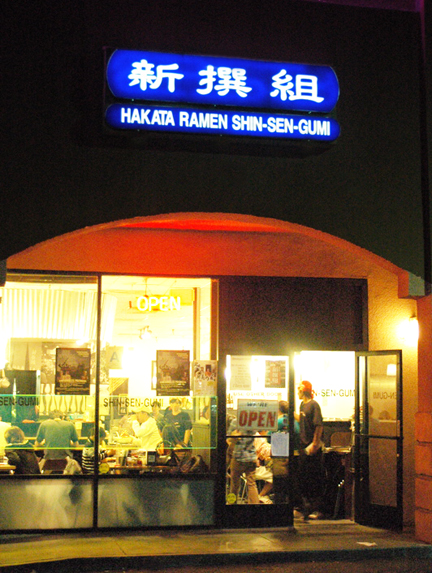
Ramen was a fairly new thing to me prior to moving to the Westside nearly 3 years ago. Growing up in the San Gabriel Valley, I was very content with the Chinese, Thai and Vietnamese noodle dishes made available to us. It saddened me to see that there were very few Asian restaurant establishments in the area, but I would have to make do for at least 5 days out of the week because of work. A friend of mine introduced me to the Japanese food on Sawtelle Blvd. and I ended up going there almost every other week. My favorite of course was Japanese-style ramen. Places like Ramenya, Asahi and Kinchan's were put into my rotation, with Kinchan's being my favorite. I refer to these as the 'Sawtelle Ramen Trio' - ramen shops that serve the popular 'Shoyu', 'Shio' and 'Miso' styles of ramen. 'Shoyu' is soy sauce-based soup; 'Shio' is salt-based soup and 'Miso' is miso paste-based soup. A noodle enthusiast by the handle of 'Noodleman' educated me recently on the different types of ramen, referring to the three styles as 'Assari-Kei' ramen.
I was content with 'Assari-Kei' style ramen until I discovered Shin Sen Gumi Hakata-style ramen, which serves a thicker, milkier broth known as 'Kotteri-Kei' ramen. This method requires boiling pork bones and fat for at least 12 hours. The result is beauty in a bowl, called 'Tonkotsu' ramen.
Shin Sen Gumi is a restaurant corporation that operates mainly in the Torrance/Gardena area, with restaurants as far as Fountain Valley in Orange County. Their latest ramen addition is in the city of Rosemead, right next to San Gabriel and Temple City. When I found out about this, I went nuts. I tried the Fountain Valley location and fell in love with it. I absolutely love Shin Sen Gumi's ramen and have probably been to the Rosemead location nearly 15 times in the few months it's been open. I'm like one of the guys from Cheers - they know me.
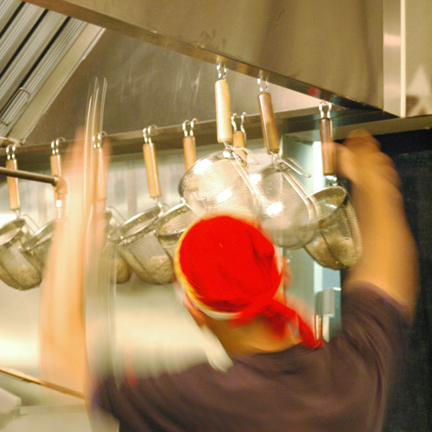
Octopus Man
It's almost like this guy has multiple arms. When an order is fired, you can see him running back and forth from the counter to the noodle pot, stock pot and preparing the orders. SSG usually has one guy doing this.

13-Hour Goodness
Yes, it takes that long to boil out the delicious flavor of pork bones. The white broth color is due to marrow and collagen being completely rendered out. Neck and leg bones are used mainly.
What makes this ramen shop different from others is that you can only order one style of ramen - the tonkotsu ramen. This IS their specialty. No overwhelming list of ramen noodles like Ramenya. Shin Sen Gumi's laborious process of boiling pork bones extends 15 hours and produces the most flavorful soup anyone can ask for. They use egg noodles that are similar to Chinese Won Ton Noodles and Vietnamese Mi Noodles. Three tender slices of Berkshire pork are laid out nicely on top of the heavenly bowl and garnished with supercrisp green onions and nicely-flavored red ginger (beni shoga). Simplicity can be a beautiful thing.
Shin Sen Gumi allows you to customize your bowl of noodles within three categories:
A. Texture of noodle: Hard, Normal or Soft
B. Soup Oil: Heavy, Normal or Light
C. Soup Base (strength & density): Heavy, Normal or Light
For first time-goers, I suggest trying the ramen with normal noodles, oil and soup strength. If you choose to come back, then you can customize. I made the mistake of bringing my friends and choosing Hard, Heavy and Heavy for their ramen. It was too much for them. Everyone's different, so let them choose. I always go for hard noodles, light oil and light soup base.
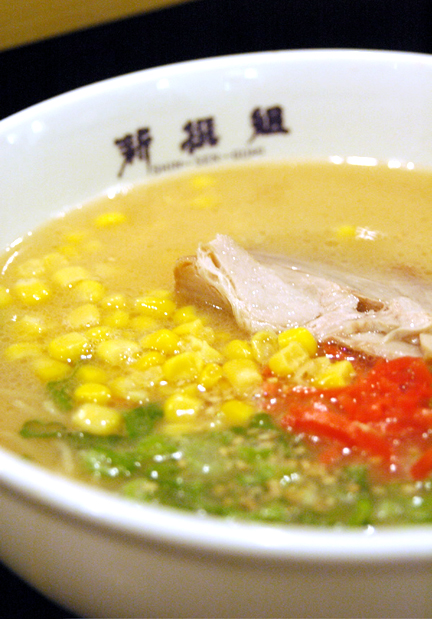
SSG's Highly-Coveted Ramen
Look at it glistening like sunrays over the ocean. I love to add corn to my bowl.
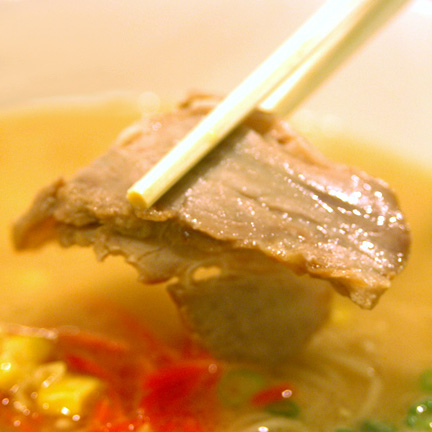
Food Porn Centerfold
The pork is super tender and super tasty.
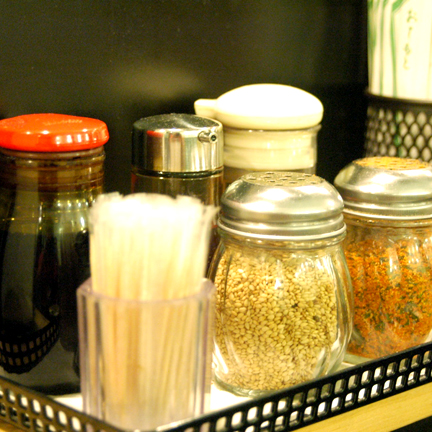
Ramen Condiments
These are provided for dumpling sauce. I simple Japanese style dipping sauce consists of soy sauce, vinegar and sesame oil. For the ramen, I like to add sesame seeds, chili oil and the red chili pepper (shichimi togarashi), which isn't spicy at all. Japanese food is typically not spicy. With exceptions, like Orochon Ramen, which really tests out your threshold for spicy noodles.
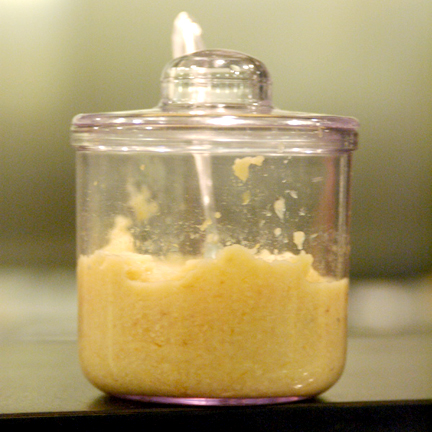
Pureed Garlic
This isn't a very common condiment at ramen shops, but places like SSG and Daikokuya in Little Tokyo provide it for those that want to terrify those that dare to speak to them within close range. Add this for a nice flavorful kick.
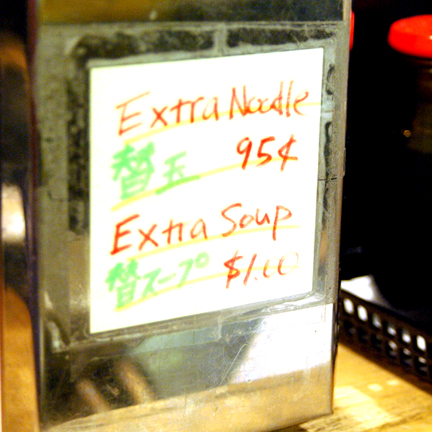
Extra Gluttony Please
For the heavy hitters, you can ask for extra noodles for only $.95 (kaedama). I had heard that either the Fountain Valley or Gardena ramen locations used to reward those that could eat 6+ rounds of noodles. Their check was eaten up by the restaurant and recognized on their Wall of Fame.
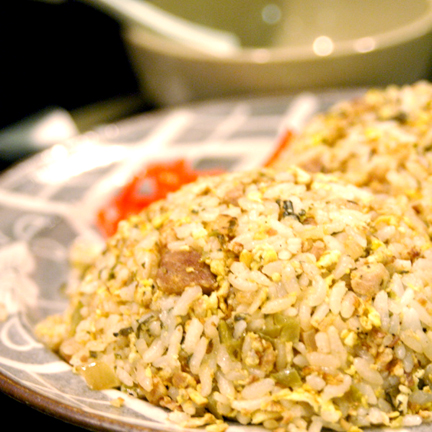
Hakata-style Fried Rice
This is so good, mainly due to the fact that it is probably 50% butter. Chinese pickled veggies are minced finely with eggs and ground pork.
Come here for lunch because you'll get more for your money. Dinner time, the ramen is $6.95 with the option of extra toppings for a small charge. Lunch time, you can get variations of ramen sets that include small, but delicious gyoza, hakata-style fried rice (pictured above) and ground chicken rice bowls under $8.
If you're looking for a break from the Assari-Kei style noodles, give Shin Sen Gumi a try. Tonkotsu ramen is much thicker in taste and density and might be much for the seek a light bowl of noodles. I dread the day I would have to eat lighter bowls of noodles. Hopefully, you'll enjoy it as much as I do and achiever 'Cheers' status.
*The 'Sawtelle Trio' is now the 'Sawtelle Quartet' with the addition of Chabuya Tokyo Noodle Bar which also serves a tonkotsu-style ramen.

Shin Sen Gumi Hakata Ramen
8450 E. Valley Blvd.
Rosemead, CA 91770
(626) 572-8646




<< Home